Disclosure: We may get commissions for purchases made through links in this post.
Choosing polymeric sand as the material to fill and bind your pavers has its advantages. But how much do you need to purchase so that you can adequately fill all the gaps in between the paving materials in your patio? We've done the research so that you'll know how to compute the amount of sand that you need for your hardscaping project.
The amount of polymeric sand that you'll need for your patio will depend on how big your area is. Other factors that affect the number of bags that you have to buy are the size of the width and depth of the joints along with the shape and size of the pavers or stones used for your hardscaping.
For reference, a 50-lb. bag of polymeric sand can cover 75 to 100 sq ft of patio space if the gaps are narrow, 30 to 60 sq ft for wider gaps, and 8 to 10 sq ft for those patio pavements with irregular gaps.
Continue reading so we can help you determine how much sand you need for your patio based on your own paving needs. We'll also answer if you can add more polymeric sand in the joints, if you can pressure wash your pavers, and if water will be able to drain through polymeric sand. Let's get down to business!
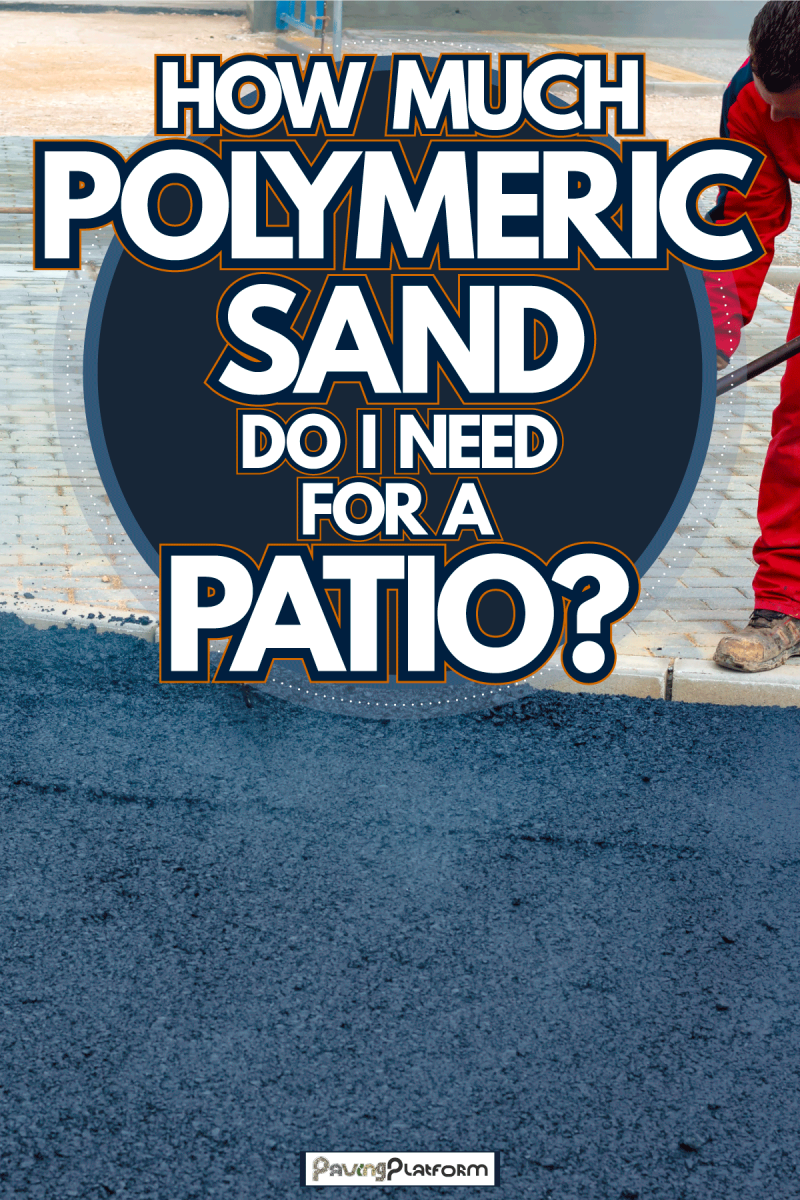
How do I calculate how much sand I need for my patio?
Polymeric sand, also known as jointing sand and paver sand, is one of the materials used to fill the gaps in between your interlocking pavers. It will help bind them together so that they'll stay in place. It also closes off the space to avoid having water, dirt, weeds, pests, and other unwanted particles from getting inside or settling there. Otherwise, they will only destroy your pavement.
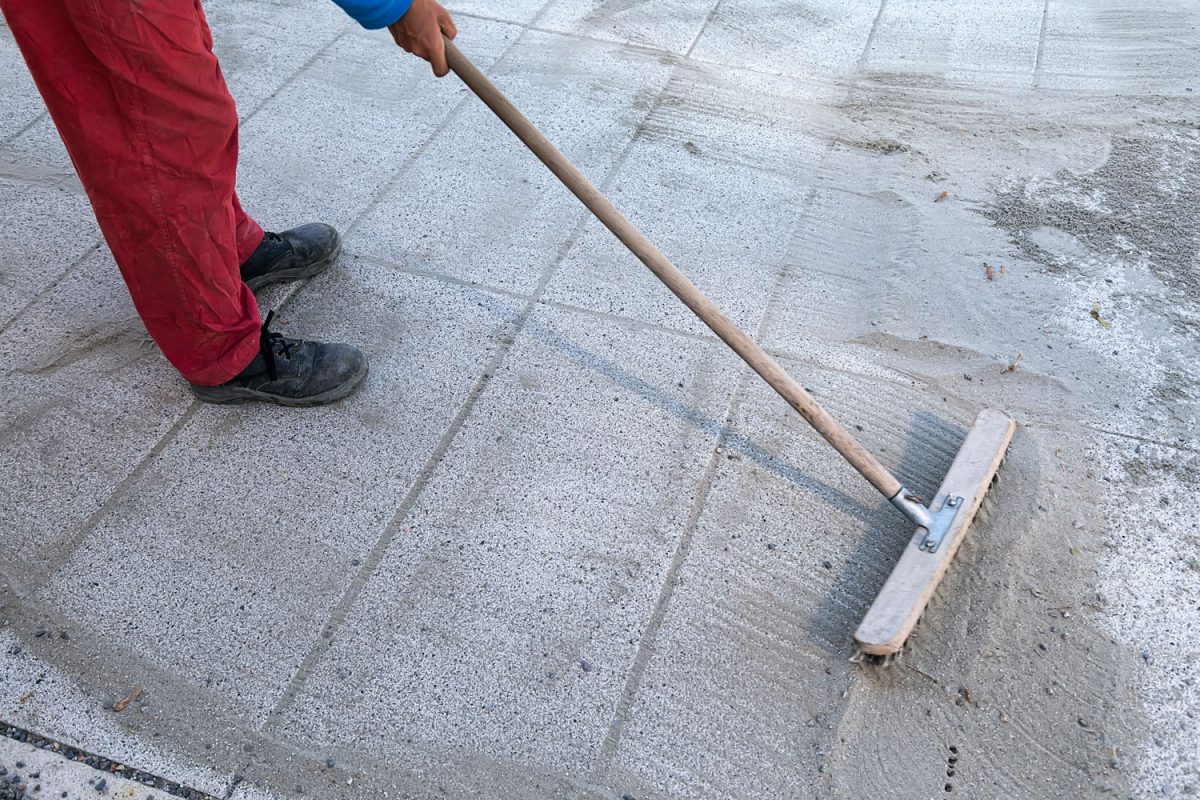
Polymeric sand is also preferred by experts because of its durability. It can last for over a decade with minimal maintenance which makes your investment worth it. It cannot be easily washed off by rain. Paver sand is also available in different colors so you can easily find one that'll complement your pavement.
It's no wonder then if you have chosen polymeric sand as your filler for the pavement in your patio. The next thing you have to do now is to determine how much you'll need to purchase to cover all the spaces in between your pavers or stones sufficiently. You don't want to buy too little then go back to buy some more. On the other hand, buying too much will be a waste of money.
What impacts the amount of sand needed?
Here are the factors that'll influence how much sand you need:
Surface area
Of course, it follows that the amount of sand that you need for your patio depends on how big your space is. The bigger your patio is, the more polymeric sand you'll need.
Size of the gaps
Another factor to consider is the width and depth of the gaps in between each paver or stone. You'll need more bags of jointing sand to fill up bigger and wider gaps.
Size and shape of paving materials
The shape and size of the pavers or stones would also influence how much paver sand you'll need. Pavers or stones with a honed edge will require less jointing sand to fill the tighter gaps.
For you not to waste your time and money, here's a reference for you.
A bag of polymeric sand that weighs 50 lbs will be good enough to cover 75 to 100 sq ft of your patio area if the gaps in between your pavers are narrow or less than a quarter of an inch. However, if the gaps are wider or between 1/4 inch to 3/8 inch, the same bag will only be good for 30 to 60 sq ft. But if you have irregular gaps for your flagstone patio, this 50-lb bag will only cover 8 to 10 sq ft.
Check out this 50-lb. bag of polymeric sand on Amazon.
In other words, it really depends on your paving needs. It's best to check the packaging to have an idea about the recommended coverage area of the polymeric sand that you're buying. Some manufacturers also have an online calculator to help you determine how many bags of their product you need to buy. You just need to measure the length and width of the joints to get a fairly accurate computation.
Can you add more polymeric sand?
Just in case you've miscalculated the amount of polymeric sand that you need, can you add more of this jointing sand so that you can fill the gaps all the way?
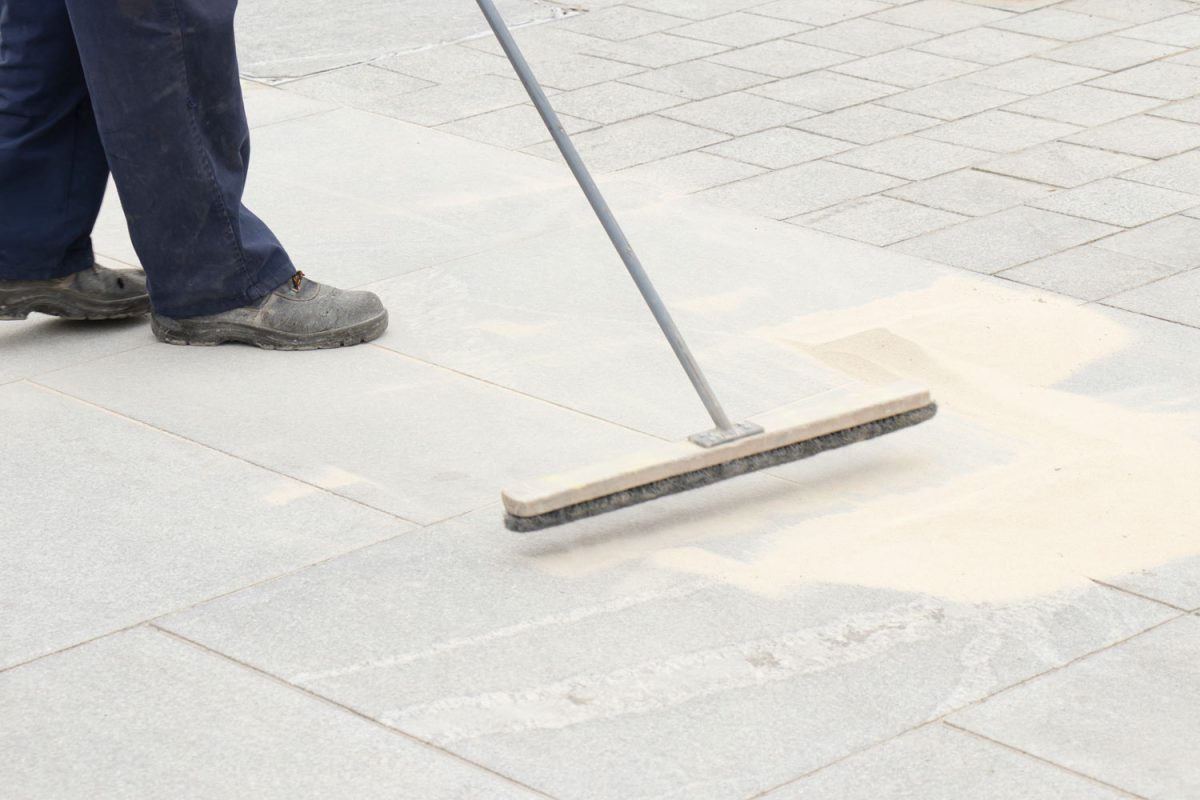
As long as you haven't added water yet, you can still add more polymeric sand. However, if you've already added water to your paver sand, it will begin activating the additives that'll harden this material. At this point, it is no longer advisable to apply more sand on top of the mix. It will not adhere properly which means that it won't be effective in binding and covering the gaps in your pavement joints.
Experts recommend that you remove any existing sand first before you put in the new jointing sand. There should be a uniform depth of at least one inch across the joints for polymeric sand to work properly.
If the previous application has already dried and set, you can use a pressure washer to soften the paver sand and remove them along with all the dirt on the surface.
Can you pressure wash pavers with polymeric sand?
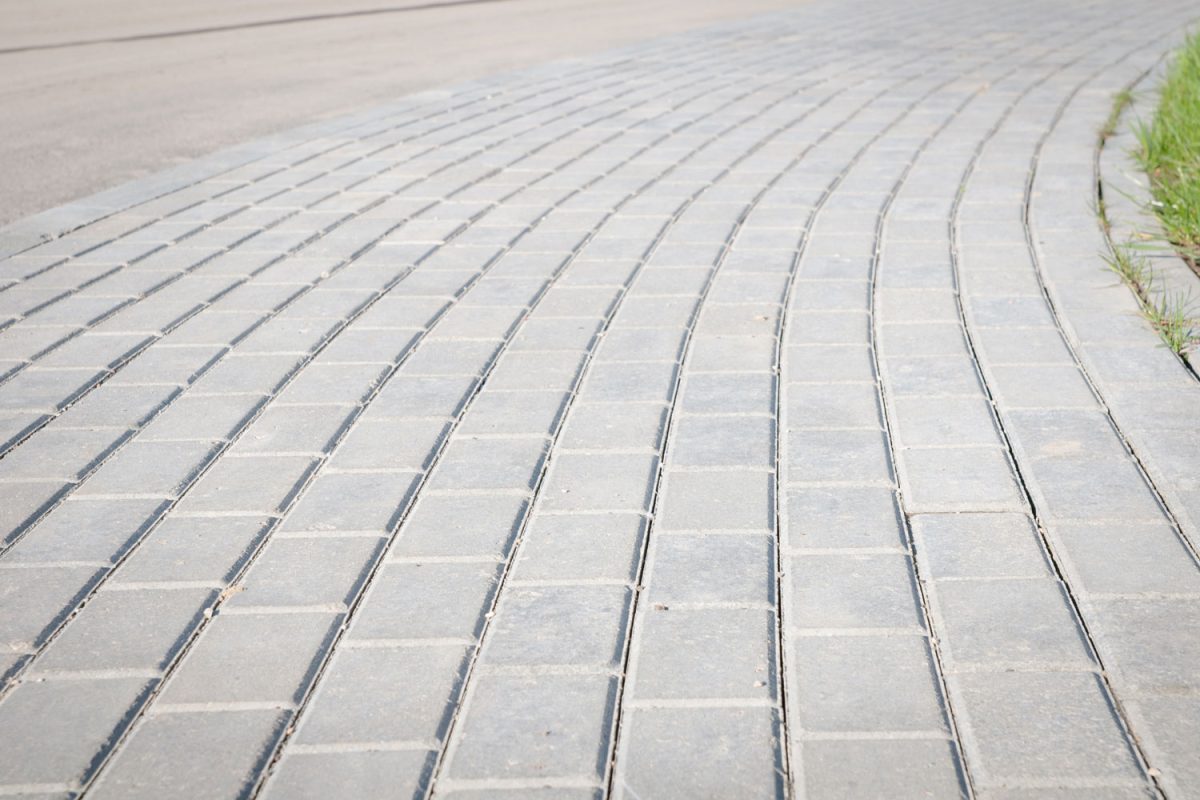
As mentioned earlier, polymeric sand is a durable material to use for filling the spaces in between your pavement joints.
However, homeowners still need to take care of it properly to make it last longer. One of the things that experts don't advise you to do is pressure washing your pavement. Most homeowners do not have the right equipment and know-how for pressure washing.
Using strong pressure can soften the jointing sand, lead to the removal of its color, and erosion of its particles. When this happens, the joints will be uneven and there can possibly be cracks where weeds and pests can start to settle and begin their infestation on your pavement.
As such, homeowners are advised to find other means to clean their pavements other than pressure washing. They can use soapy water and scrub the surface lightly or use steam cleaning with low pressure to remove dirt and grime on the pavers' surface.
Will water drain through polymeric sand?
Polymeric sand will allow water to drain freely if it has been applied properly. You should also follow the right installation process to ensure that there's proper drainage.
There should be enough bedding sand in between the limestone, crushed concrete, or their aggregates where the stone and pavers are set on. This is crucial as it will allow water to escape or pass through the pavement instead of saturating the structure.
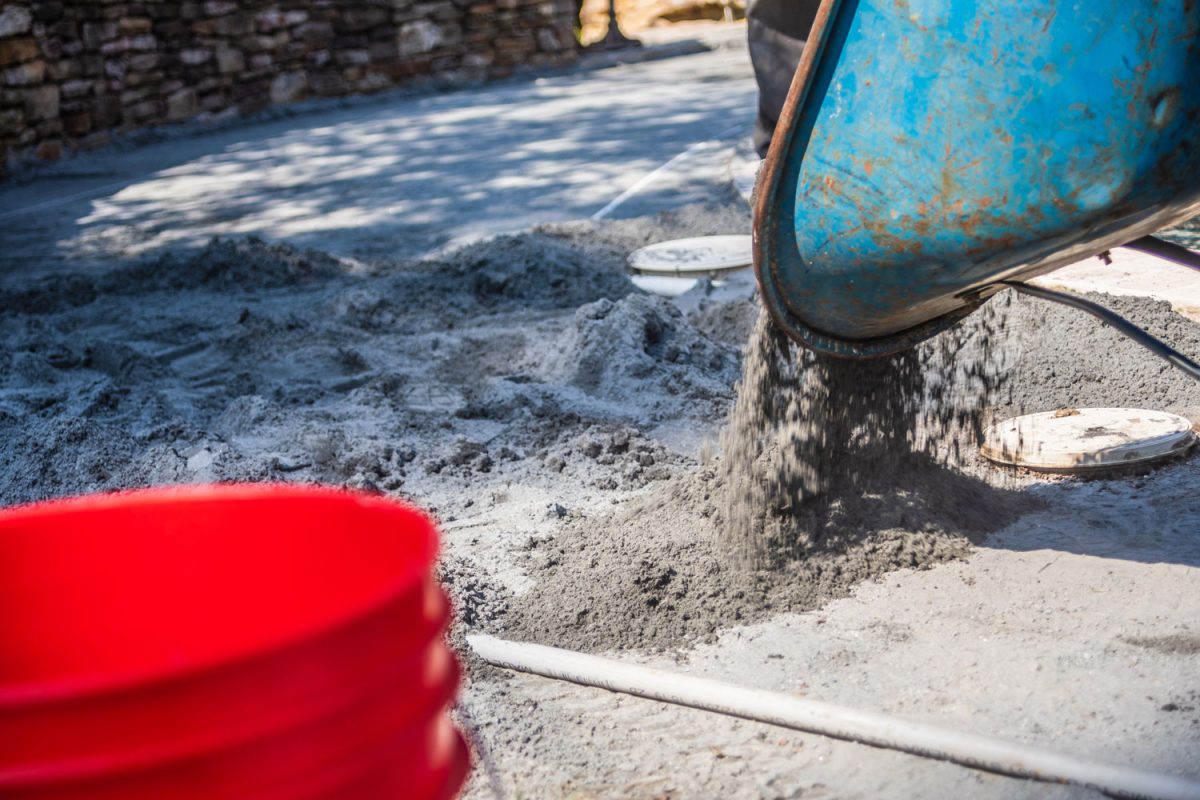
When there's no proper drainage, the polymeric sand will be soaked with water and this will weaken its bond. When this happens, the jointing sand will be eroded and you'll have to fill the gaps with new sand.
It is also important to ensure that there's a border, whether natural or artificial, to prevent the paver sand from washing out. There should also be a slight slope away from the house to let the water flow freely.
Final Thoughts
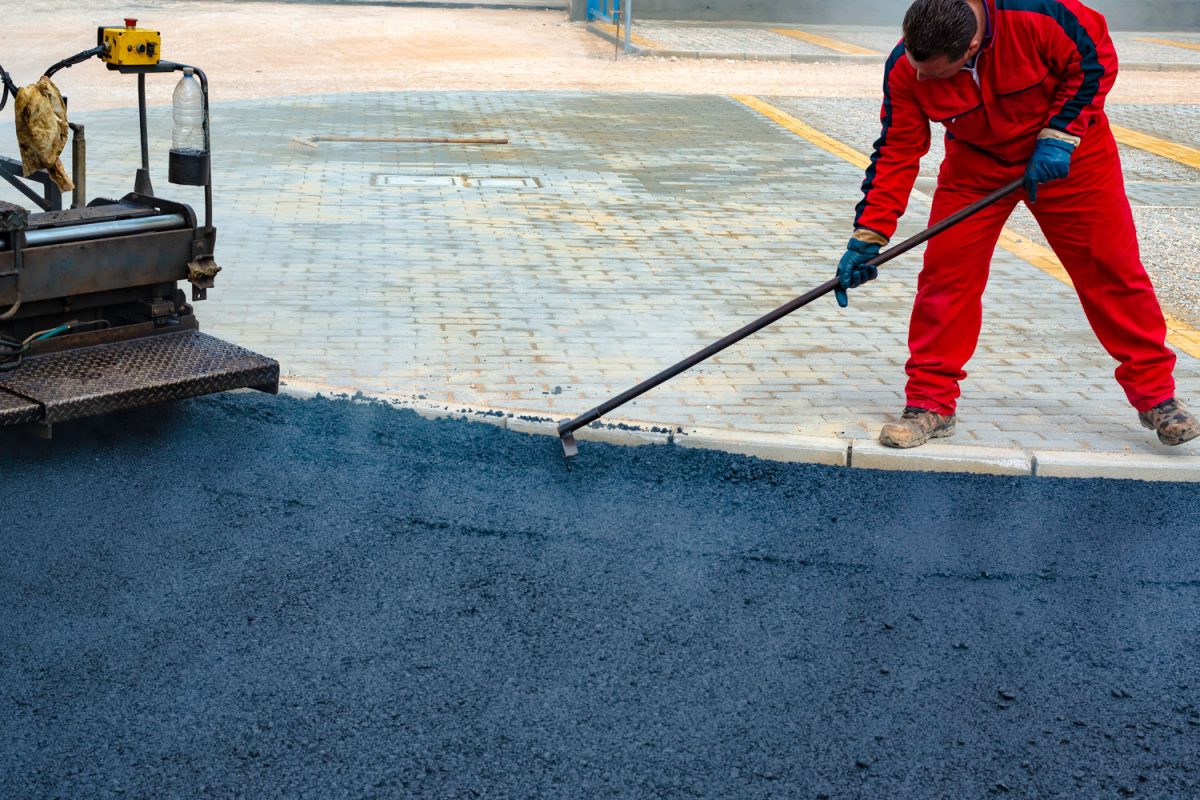
You have to check the surface area of your patio and the size of the gaps to determine how much polymeric sand you need to purchase for your paving project. Just remember that the larger your area and the wider the gaps, the more jointing sand you're going to need to be able to fill the gaps with a sufficient amount of paver sand.
To know more about related topics, you may visit the following posts:


![Vibrant Red Paver Stone Path, Can You Spray Paver Sealer? [How To Apply It]](https://pavingplatform.com/wp-content/uploads/2022/04/Vibrant-Red-Paver-Stone-Path-600x400.jpg)
![Properly laid out red pavers for a garden, Can You Tint Paver Sealer? [And How To]](https://pavingplatform.com/wp-content/uploads/2022/04/Properly-laid-out-red-pavers-for-a-garden-600x400.jpg)
